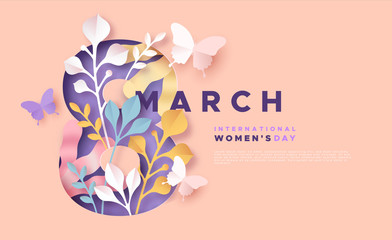International Women’s Day 2023 – Embrace Equity

International Women’s Day 2023 – Embrace Equity
International Women’s Day is celebrated on March 8 every year to highlight the social, economic, cultural, and political achievements of women. It is also a day to raise awareness about gender inequality and call for action to create a more equal world for all. One of the key areas where gender inequality persists is the workplace. While progress has been made, women still face numerous barriers to equal opportunities and treatment in the workplace. As such, it is important for employers to be intentional about ensuring that their business is equal for everyone.
Gender inequality in the workplace takes many forms. One of the most visible is the gender pay gap, which refers to the difference in average pay between men and women. According to the World Economic Forum’s 2020 Global Gender Gap Report, the global gender pay gap is 16%, meaning that women earn on average 84 cents for every dollar earned by men. The gender pay gap is even wider for women of colour, who face intersectional discrimination based on their race and gender. For example, Black women in the United States earn just 63 cents for every dollar earned by white men.
Other forms of gender inequality in the workplace include discrimination in hiring, promotion, and training, as well as sexual harassment and gender-based violence. These issues can have serious consequences for women’s career advancement, job satisfaction, and mental health. They can also lead to higher turnover rates and lower productivity, which can negatively impact a company’s bottom line.
To create a more equal workplace, employers need to be intentional about addressing these issues. Here are some steps they can take:
- Conduct a gender pay gap analysis: The first step in addressing the gender pay gap is to understand it. Employers should conduct a gender pay gap analysis to identify any disparities in pay between men and women in their organisation. This analysis should include a review of job titles, levels, and departments, as well as an examination of any bonus or incentive schemes. Once the analysis is complete, employers can take steps to address any disparities, such as adjusting salaries or bonuses.
- Implement diversity and inclusion policies: Employers should develop and implement diversity and inclusion policies that promote gender equality in the workplace. These policies should include specific measures to address gender-based discrimination and harassment, as well as to promote the recruitment and retention of women in all levels of the organisation. Employers should also consider implementing flexible work arrangements, such as telecommuting or job-sharing, to help employees balance work and family responsibilities.
- Provide training and development opportunities: To promote gender equality in the workplace, employers should provide training and development opportunities that are accessible to all employees, regardless of gender. This can include leadership development programs, mentoring, and coaching. Employers should also encourage women to pursue career advancement opportunities and provide them with the necessary support and resources to do so.
- Address unconscious bias: Unconscious bias can lead to discriminatory behaviour and decisions in the workplace. To address unconscious bias, employers should provide training to employees on how to recognise and mitigate it. They should also ensure that their hiring and promotion processes are fair and objective, and that they avoid relying on subjective assessments of job candidates or employees.
- Support work-life balance: Supporting work-life balance is important for all employees, but it is particularly important for women who may have caregiving responsibilities. Employers can support work-life balance by offering flexible work arrangements, such as flexible hours or telecommuting, and by providing paid parental leave and childcare assistance.
- Encourage diversity in leadership: Finally, employers should strive to achieve greater diversity in their leadership ranks. This can include setting targets for the recruitment and promotion of women, as well as actively seeking out diverse candidates for leadership positions. By having more women in leadership positions, organisations can promote a more inclusive workplace culture and help to create a better representation of the communities they serve. Additionally, having diverse perspectives and experiences at the leadership level can lead to better decision-making and problem-solving, which can ultimately benefit the entire organization. By taking intentional action to encourage diversity in leadership, employers can help to break down barriers to gender equality in the workplace and create a more equitable and inclusive future for all employees.
In conclusion, International Women’s Day serves as a reminder of the ongoing struggle for gender equality in all areas of life, including the workplace. Employers have a key role to play in promoting gender equality, and by taking intentional action, they can create a more equal and inclusive workplace. From conducting a gender pay gap analysis to implementing diversity and inclusion policies, providing training and development opportunities, addressing unconscious bias, supporting work-life balance, and encouraging diversity in leadership, there are many steps that employers can take to promote gender equality in their organizations. By doing so, they can help to create a better future for women, and for all employees.
For more a discussion about your workplace diversity, inclusion, and gender equity strategies please get in touch via the Contact Form or by email at hello@mmchr.com.au

